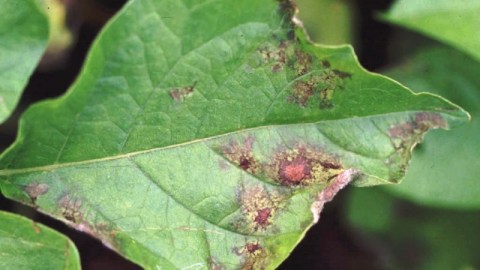The Potato Famine Fungus is Back, But This Time We Have Genomics

Late blight is back. The fungus, which spreads through its spores and caused the great Irish Potato Famine of the 1840s, emigrated to the United States back then and is hitting the potatoes and tomatoes of the eastern U.S. especially hard this year. This time, however, scientists are working to get a step ahead: they just finished sequencing the genome of this pesky organism.
The new study, done by MIT and Harvard scientists and just published in Nature, shows why the late blight is so hard to handle. Three-quarters of its genome is filled with repetitive DNA that appears able to evolve with great haste, outwitting our attempts to control it via chemical treatments or genetically-resistant crops.
The late blight genome is so big that the researchers call it “animal-sized.” By contrast, it contains three or four times as many genes and some of its relatives, like other plant diseases.
As usual, it’ll take years to turn the mountain of new information about late blight into an effective weapon against it. But the sooner the better. The New York Times reported in July that this summer’s outbreak threatened to double the price of afflicted crops if the blight reached major growers and damaged supply.
Hopefully, then, in this case evolution isn’t too much cleverer than you or I.





